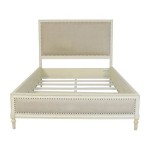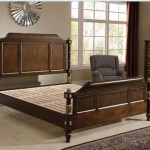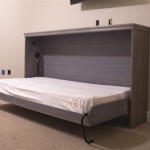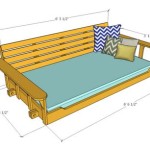What Is a Smart Hospital Bed?
A smart hospital bed represents a significant advancement in patient care and hospital efficiency. It integrates technology and data connectivity to enhance patient comfort, safety, and clinical outcomes. These beds go beyond the basic functionality of traditional hospital beds, offering a range of features that streamline workflows and improve the overall hospital experience for both patients and staff.
Enhanced Patient Comfort and Safety
Smart hospital beds prioritize patient comfort and safety. They often feature integrated pressure sensors that monitor patient movement and weight distribution, helping to prevent pressure ulcers. These sensors can automatically adjust the bed's firmness and positioning to optimize pressure relief and promote circulation. Some models also offer personalized comfort settings, allowing patients to adjust the bed's height, head and foot positions, and even temperature to meet their individual preferences. Built-in safety features, such as bed exit alarms and fall prevention systems, contribute to a safer environment for patients at risk of falls.
Improved Clinical Workflow and Efficiency
Smart hospital beds can significantly improve clinical workflow and efficiency. Integrated scales eliminate the need for separate weighing procedures, saving time and reducing the risk of patient transfers. Real-time data on patient position and movement can alert nurses to potential issues, allowing for proactive intervention. The ability to remotely monitor bed status and patient data streamlines communication between healthcare providers and allows for more efficient allocation of resources. These features free up valuable nursing time, enabling staff to focus on more complex patient needs.
Data Integration and Analytics
Smart hospital beds play a crucial role in data integration and analytics within the healthcare ecosystem. The data collected by these beds can be seamlessly integrated with electronic health records (EHRs) and other hospital systems. This integration provides a comprehensive view of patient health, allowing for more informed clinical decision-making. The data can also be used to identify trends and patterns, which can be leveraged to improve patient care protocols and optimize hospital resource allocation. This data-driven approach to healthcare management can lead to better patient outcomes and increased operational efficiency.
Key Features of Smart Hospital Beds
Several key features distinguish smart hospital beds from traditional models. These features contribute to enhanced patient care, improved workflow, and data-driven insights. Integrated scales provide accurate weight measurements without the need for separate equipment. Pressure sensors monitor patient movement and weight distribution to prevent pressure ulcers. Bed exit alarms and fall prevention systems enhance patient safety. Personalized comfort settings allow patients to adjust the bed to their individual preferences. Remote monitoring capabilities enable real-time data access for healthcare providers.
Benefits for Patients
Patients experience numerous benefits from the use of smart hospital beds. Increased comfort and reduced pressure ulcer risk contribute to a more positive hospital stay. Enhanced safety features provide peace of mind and reduce the risk of falls. Personalized settings empower patients to control their environment, promoting a sense of independence and well-being. The integration of technology allows for more personalized and responsive care, improving the overall patient experience.
Benefits for Healthcare Providers
Smart hospital beds also offer significant benefits for healthcare providers. Improved workflow efficiency frees up valuable time for nurses and other staff. Real-time data access enables proactive intervention and more informed decision-making. Data integration and analytics contribute to improved patient outcomes and optimized resource allocation. Reduced manual tasks and streamlined processes improve overall hospital efficiency.
Integration with Existing Hospital Systems
The successful implementation of smart hospital beds requires seamless integration with existing hospital systems. Compatibility with EHRs and other clinical software is essential for data sharing and analysis. Integration with nurse call systems and other communication platforms facilitates efficient workflow and timely responses to patient needs. A well-integrated system ensures that data flows smoothly between different departments and devices, maximizing the benefits of the smart bed technology.
Future of Smart Hospital Beds
The future of smart hospital beds holds even greater potential for transforming healthcare. Advancements in sensor technology and data analytics will enable more personalized and predictive care. Integration with artificial intelligence (AI) and machine learning (ML) algorithms could further enhance diagnostic capabilities and treatment protocols. The development of more intuitive interfaces and user-friendly controls will improve the patient experience and empower individuals to take a more active role in their own care.

Smart Hospital Beds Rooms For Better Patient Care Healthcare Business Club

Hill Rom S New Smart Bed Will Incorporate Early Sense Continuous Monitoring System Mobihealthnews

Stryker Launches A Smart Hospital Bed Medical Design And Outsourcing

Advancing Patient Care With Connected Smart Bed Technology

A Smart Bed Today S Hospitalist

Hamilton Health Helps Design A Smart Hospital Bed

Chula S Smart Hospital Beds To Prevent Falls In Elderly Patients Chulalongkorn University

Hill Rom And Earlysense Launch Smart Hospital Bed W Integrated Monitoring Technology

Can Smart Hospital Beds Replace Patient Monitors

12 Main Features Of The Smart Hospital Bed Dragomir Et Al 2024 Scientific Diagram







